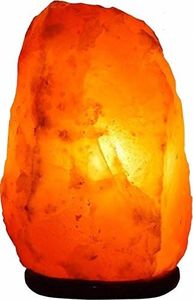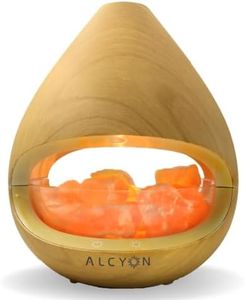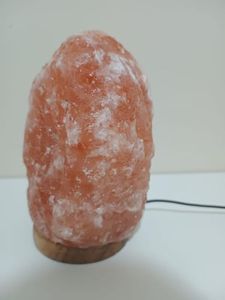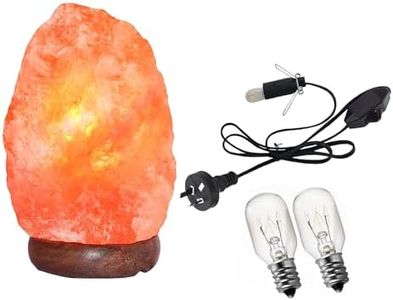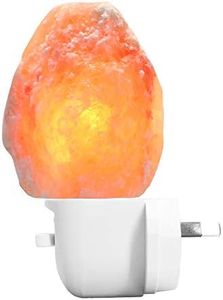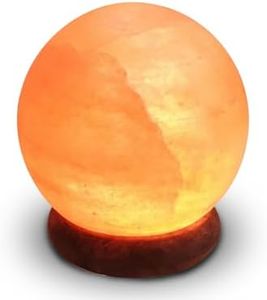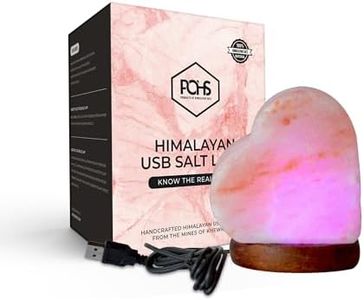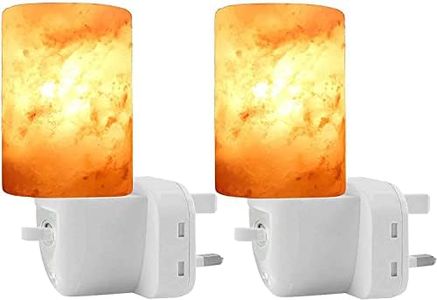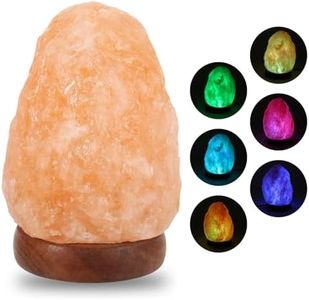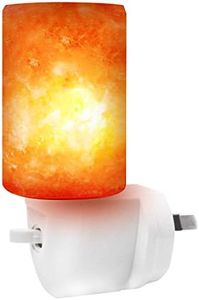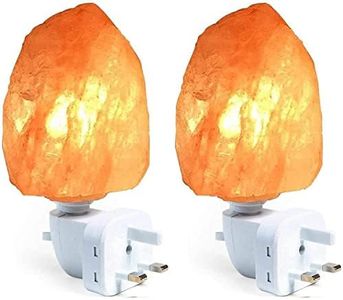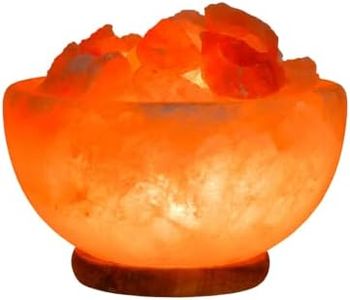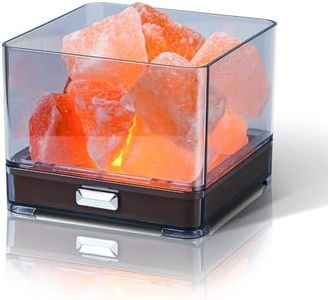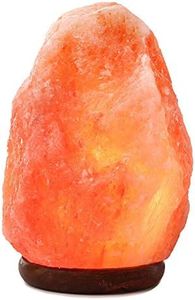We Use CookiesWe use cookies to enhance the security, performance,
functionality and for analytical and promotional activities. By continuing to browse this site you
are agreeing to our privacy policy
10 Best Himalayan Salt Lamps
From leading brands and best sellers available on the web.Buying Guide for the Best Himalayan Salt Lamps
Choosing a Himalayan salt lamp can be a relaxing and rewarding process because these lamps are known for their warm, soothing glow and potential wellness benefits. It's important to consider not just the look, but also the build quality and the purpose you want the lamp to serve, such as mood lighting, a decorative piece, or a nightlight. Focus on the main specifications which affect the lamp's appearance, safety, and user experience to ensure you get a lamp that meets your needs and fits well into your living space.Weight and SizeWeight and size determine how large and prominent the lamp will appear in your space, as well as how bright its glow might be. Smaller lamps, usually under 5 pounds, are suitable for desks or nightstands, providing a gentle light ideal for small areas. Medium lamps, around 6–12 pounds, work well for bedrooms or medium-sized living rooms, striking a balance between presence and subtlety. Larger lamps, over 12 pounds, become striking decorative statements, often emitting a slightly stronger glow that can fill bigger spaces. Choose based on where you plan to place the lamp and the ambiance you’re aiming to create—a small one for soft bedside glow, or a large one for a centerpiece.
Purity and AuthenticityPurity and authenticity refer to whether the lamp is genuinely made from Himalayan salt crystals, usually mined from the Khewra Salt Mine in Pakistan. Real Himalayan salt lamps have distinct irregularities and a range of soft pink to orange color hues. Some lamps may be dyed or imitation, lacking both the visual charm and claimed wellness effects. If genuine origin is important to you, look for information about sourcing and natural variances. Those prioritizing aesthetics may be comfortable with either option, but if authenticity and purported health benefits like air purification matter to you, choose a reputable supplier with clear sourcing information.
Color and HueColor and hue affect the warmth and mood the lamp creates. Himalayan salt lamps naturally range from pale pinks to deep oranges and reds, with paler tones generally giving off a brighter, crisper light, and darker lamps emitting a cozier, softer glow. Lighter hues are good if you want more illumination, while deeper colors are better for ambiance and relaxation. Consider what feeling or visual effect you’d like in the room: choose lighter shades for reading or light tasks, and deeper hues for calming, intimate atmospheres.
Base MaterialThe base material is what supports the salt crystal and houses the electrical components. Common choices include wood, metal, or plastic. Wooden bases (often neem or pine) provide a natural look and resist moisture from the salt, while metal can offer a modern aesthetic and stable support. Plastic is lightweight and often less expensive, but might not last as long. Think about the look you want and also the durability you expect—wood or metal is best for a classic, sturdy feel, whereas plastic works fine for lighter, occasional use.
Bulb Type and WattageBulb type and wattage affect the intensity and warmth of the lamp's glow as well as energy consumption. Most Himalayan salt lamps use incandescent bulbs, but some use LEDs. Incandescent bulbs tend to enhance the warm color, while LEDs last longer and use less energy but may not provide the same warm tone. Lower wattage bulbs (e.g., 7–15W) give a softer, dimmer light, suitable for nightlights or ambiance, while higher wattage bulbs (up to 25W) produce brighter light and more heat, possibly improving any claimed air-purifying effects. Decide based on your preference for brightness, warmth, and energy savings—choose lower wattage for soft lighting or relaxation, higher for visibility or larger spaces.
Electrical Safety FeaturesElectrical safety features include certifications, quality wiring, and safe lamp holders to ensure your lamp is safe to use, especially since salt can attract moisture. Look for lamps with certified cords, sturdy switches, and appropriate lamp sockets; this reduces risk of short circuits or overheating. If you plan to leave your lamp on for extended periods, or use it in a humid environment, prioritize lamps well-rated for safety with clear compliance to standards. This is especially critical in households with children or pets.
Ease of MaintenanceEase of maintenance is about how simple it is to clean and care for your lamp. Himalayan salt is hygroscopic, meaning it attracts moisture and can 'sweat.' Consider how easy it is to wipe down the lamp, change the bulb, and move it if necessary. Some bases or designs allow bulbs to be replaced easily and cleanly, while others may be more cumbersome. If you want low-fuss upkeep, look for designs with easily accessible bulbs and sturdy bases for quick dusting and occasional reassembly.
